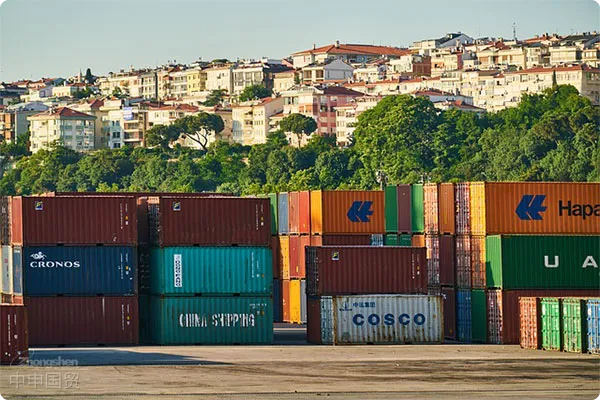- Shanghai Zhongshen International Trade Co., Ltd. - Two decades of trade agency expertise.
- Service Hotline: 139 1787 2118

Contents
ToggleNew Trends in the Imported Hydrogen-Rich Equipment Market
As of Q2 2025, China's hydrogen-rich waterEquipment ImportsThe volume increased by 37% year-on-year, with medical-grade equipment accounting for over 42%. However, customs data shows that the return rate for this category rose by 15% year-on-year, primarily concentrated in orders handled by medium-sized agency service providers. This reveals significant professional barriers in equipment imports.
Comparison of Three Typical Models of Agency Service Providers
Comprehensive service-oriented agency:
- Representative enterprises: Sinotrans, COSCOMaritime TransportationLogistics
- Advantages: Comprehensive risk underwriting capability throughout the entire process, especially suitable for first-time import enterprises.
- Disadvantages: Service fees are 40%-60% higher than the industry average.
Regional exclusive agency:
- Representative Enterprise: Specialized Hydrogen Energy Equipment Company in the Yangtze River Delta Region
- Advantages: Customs clearance at specific ports is 2-3 working days faster.
- Risk: Some enterprises engage in business activities beyond their approved scope.
Technology-oriented agent:
- Representative enterprise: Technology service company with hydrogen energy laboratory
- Core Values: Assist in completing equipment energy efficiency certification (special attention must be paid to the 2025 edition of the new national standard).
- Service blind spots: The logistics process often adopts an outsourcing model.
7 Golden Rules for Choosing an Agent
Qualification Review:
- Customs AEO certification (priority given to advanced certified enterprises)
- Hazardous Materials Business License (Required for Hydrogen-related Equipment)
- ISO28000 Supply Chain Security Certification
Customs clearance capability verification:
- Please provide the customs clearance records for the same product category from the past six months.
- Check the accuracy rate of HS code declaration (recommended requirement ≥98%).
- Confirm whether pre-classification service capability is available.
Bargaining Power Assessment:
- Compare the differences in THC fee quotations among major ports.
- Please provide a detailed breakdown of destination port miscellaneous charges.
- Confirm whether the qualification for cabin priority guarantee is met.
Analysis of Key Operation Processes
Phase 1: Requirements Confirmation
- Equipment parameter verification (with a focus on hydrogen storage pressure vessel parameters)
- It is recommended to verify through the following methods:Book Compliance Review
- Formulation of Tariff Preference Schemes (e.g., RCEP Agreement, if applicable)
Phase Two: Transportation Support
- Special container configuration for hydrogen energy equipment
- Negotiation on Special Clauses for Marine Insurance (Recommendation to Add Vibration Damage Coverage)
- Development of Shipment Schedule Contingency Plan
Phase 3: Customs Clearance and Delivery
- 3CExpress Certification Application
- Laboratory Testing Priority Scheduling Coordination
- Real-time Monitoring System for Warehouse Temperature and Humidity Access
High-Frequency Incident Handling Plan
Case 1:A certain Korean equipment was detained at the port due to the lack of material certification for the electrolyzer.
- Solution: Enable the pre-deposit customs clearance channel
- Processing time: Reduced from the standard 15 days to just 3 days.
Case 2:Japanese imported equipment faces anti-dumping investigation.
- Response Strategy: Apply for the New Shipper Review Procedure
- Cost control: Leveraging the provisional tariff policy window period.
Request for a clean on - board bill of lading. The bank refused payment because the freight forwarder missed typing the words on board,EU energy efficiency label for equipment fails to meet standards.
- Remedial Measures: Domestic Modification Technical Solution Filing
- Cost optimization: Leverage the superposition of technical renovation subsidy policies.
2025 regulatory focus reminders
New Customs Regulations:
- The dedicated HS code for hydrogen energy equipment is subdivided to 10 digits.
- The safety verification of pressure vessels is advanced to the port of shipment.
- The electronic certificate of origin verification system is now fully operational.
Market Regulation:
- Medical-use equipment requires additional drug regulatory filing.
- The energy efficiency label has been adjusted from a 5-tier to a 3-tier rating standard.
- The after-sales service system is incorporated into the import qualification review.
Related Recommendations
? 2025. All Rights Reserved. Shanghai ICP No. 2023007705-2  PSB Record: Shanghai No.31011502009912
PSB Record: Shanghai No.31011502009912










